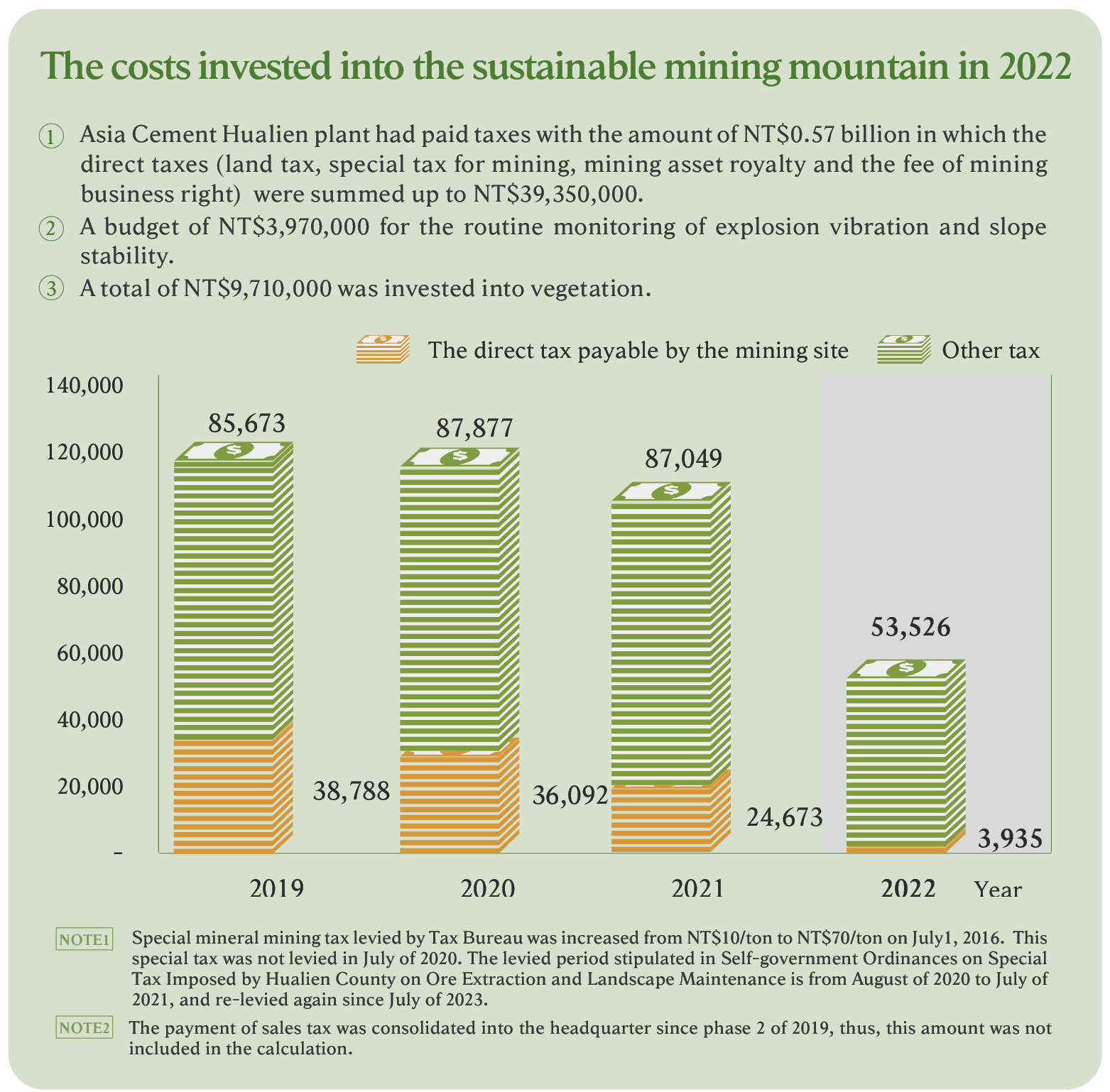- Home
- ESG Development
- Environmental
- Mining Mountain and Biodiversity
- Commitments
In line with the Taskforce on Nature-related Financial Disclosures (TNFD) initiative, Asia Cement has enacted "Biodiversity Policy" and disclosed information regarding biodiversity management. The Board of Directors has established a Corporate Sustainability Committee responsible for reviewing, approving, supervising, and modifying environmental performance, biodiversity issues, and other corporate concerns related to biodiversity policy and progress. A Corporate Sustainability Promotion Committee, led by the General Manager, oversees management directly. All departments are tasked with assessing risks and opportunities related to biodiversity, especially the long-term impact on business operations. Given Asia Cement's significant reliance on natural resources, the company evaluates impacts before, during, and after mining, formulates robust policies and plans, and collects practical implementation data. The company's restoration policy and biodiversity management plan for mining sites are considered in the analysis of corporate operational and ecological sustainability to enhance corporate strategy and mitigate biodiversity risks.
Commitment
-承諾.png)
Planning, managing, and mitigating biodiversity protection actions
-減緩階層.png)
Impact Assessment and Stakeholder Engagement
The extraction of minerals for the use of cement raw material is more or less causing bare areas on the surface of earth. In order to reduce the impacts of the vibration from the explosion during mining to the nearby residents and the environment, Asia Cement continues to strictly implement the monitoring of mining site safety and the ecological restoration of environment. All efforts are for the purpose of minimizing the impacts from the operation. In the future, in the event that Asia Cement will plan mining operations in other new locations, it will perform the evaluations of biodiversity and environmental impacts before exploring new locations.
Asia Cement Service Ceneter regularly and irregularly communicates and interacts with the stakeholders based on the stakeholder engagement mechanism and discloses the information in the Service Center, the Sustainability Report, the relevant platform or the website.
The costs invested into the sustainable mining mountain

